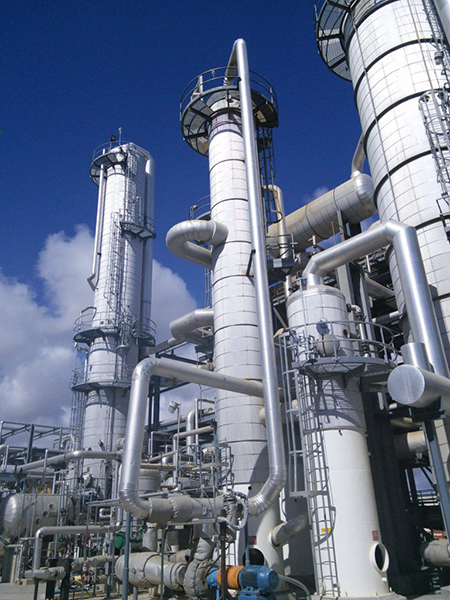Industrial Distillation Equipment

Before delving into the specifics of the distillation process and design considerations, it is important to first establish the difference between single and multiple stage separation processes in general.
One single stage of separation is defined as evaporation or more specifically but not commonly termed “Flash Distillation.” In this process one volatile component is removed in a solution by heating and consequently boiling the solution. The more volatile component in the solution is vaporized and removed from the process.
Multiple effect evaporation applies several stages of evaporation in the separation process. In multiple effect evaporation the process is limited by the sequential process design. Distillation employs the same multi-stage principle in countercurrent stages to allow for a more efficient process minimizing waste from the system.
Basics of Distillation
At its most basic definition, distillation is the separation of components in a solution based on their relative volatility. To accomplish the Distillation process, the liquid and vapor interact in a counterflow arrangement within a vertical column
Compounds separated by distillation are characterized by their volatility, which is related to the chemical’s vapor pressure. Chemicals exhibit different boiling temperatures at different pressures. For example, water boils at 212 °F at atmospheric pressure, or 14.7 psia. At 1.94 psia, it boils at 125 °F. In this example, water has a vapor pressure of 14.7 psia at 212 °F and 1.94 psia at 125 °F. Ethanol, as another example, has a vapor pressure of 32.5 psia at 212 °F and 4.55 psia at 125 °F. Since the vapor pressure (VP) of ethanol is higher than water, it is more volatile.
Relative volatility and activity coefficients are key parameters used in the design of a distillation process. Since most distillation systems contain multiple components the matrix of equations becomes quite large. Relative volatility is a measure comparing the vapor pressures of the components in a system. The activity coefficient is a factor used in the calculations to account for deviation from ideal behavior.